Notes
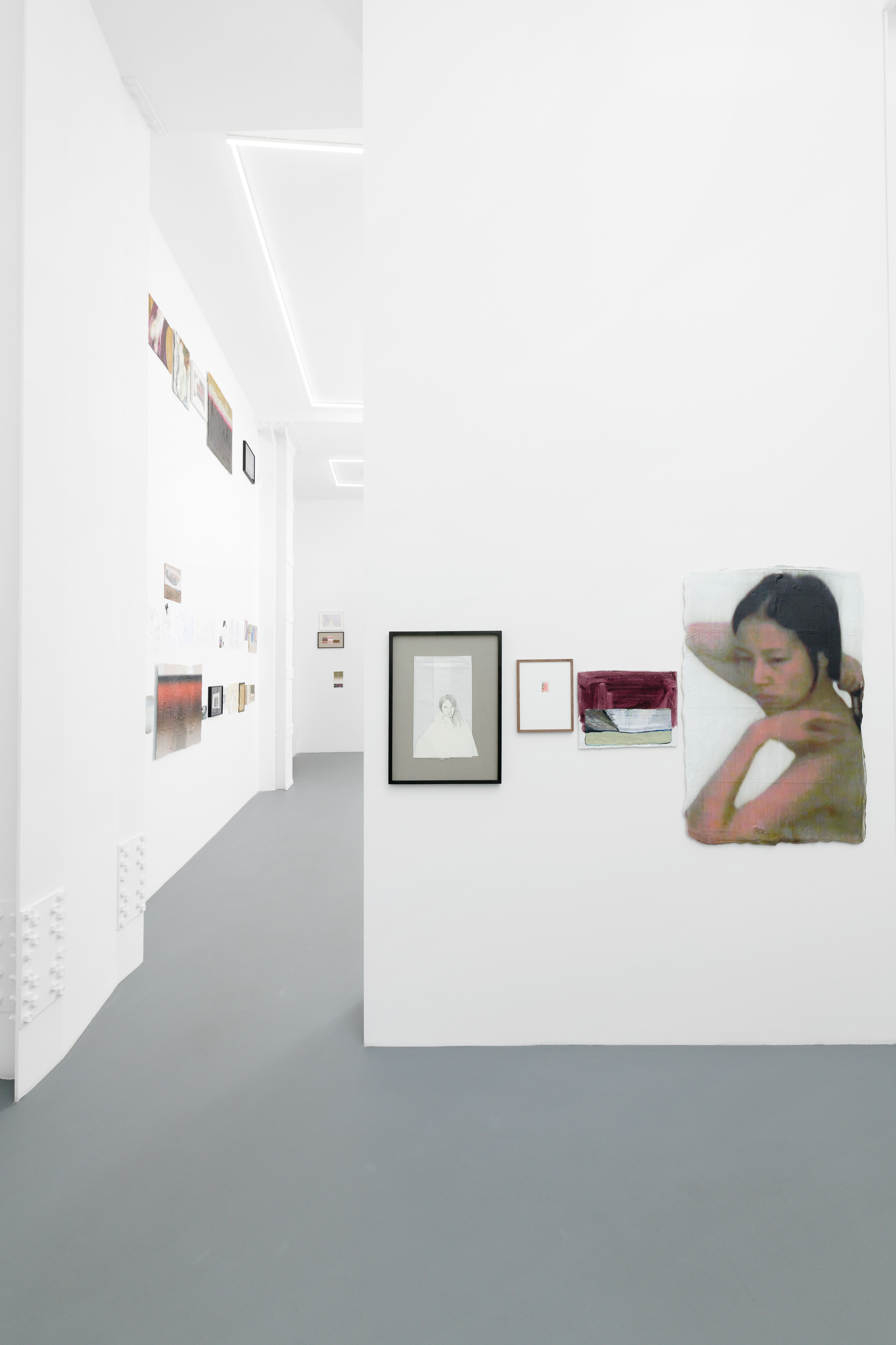
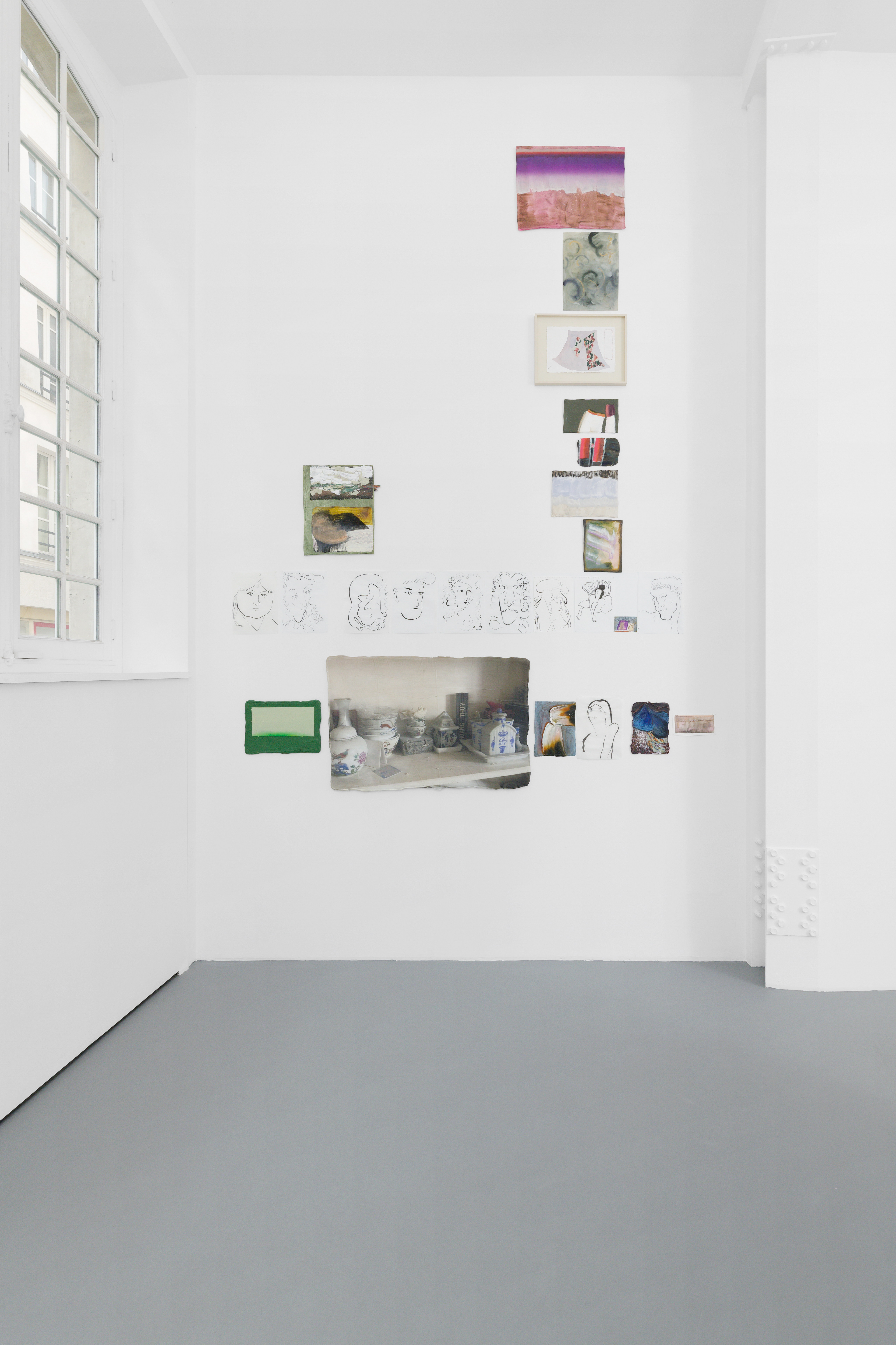
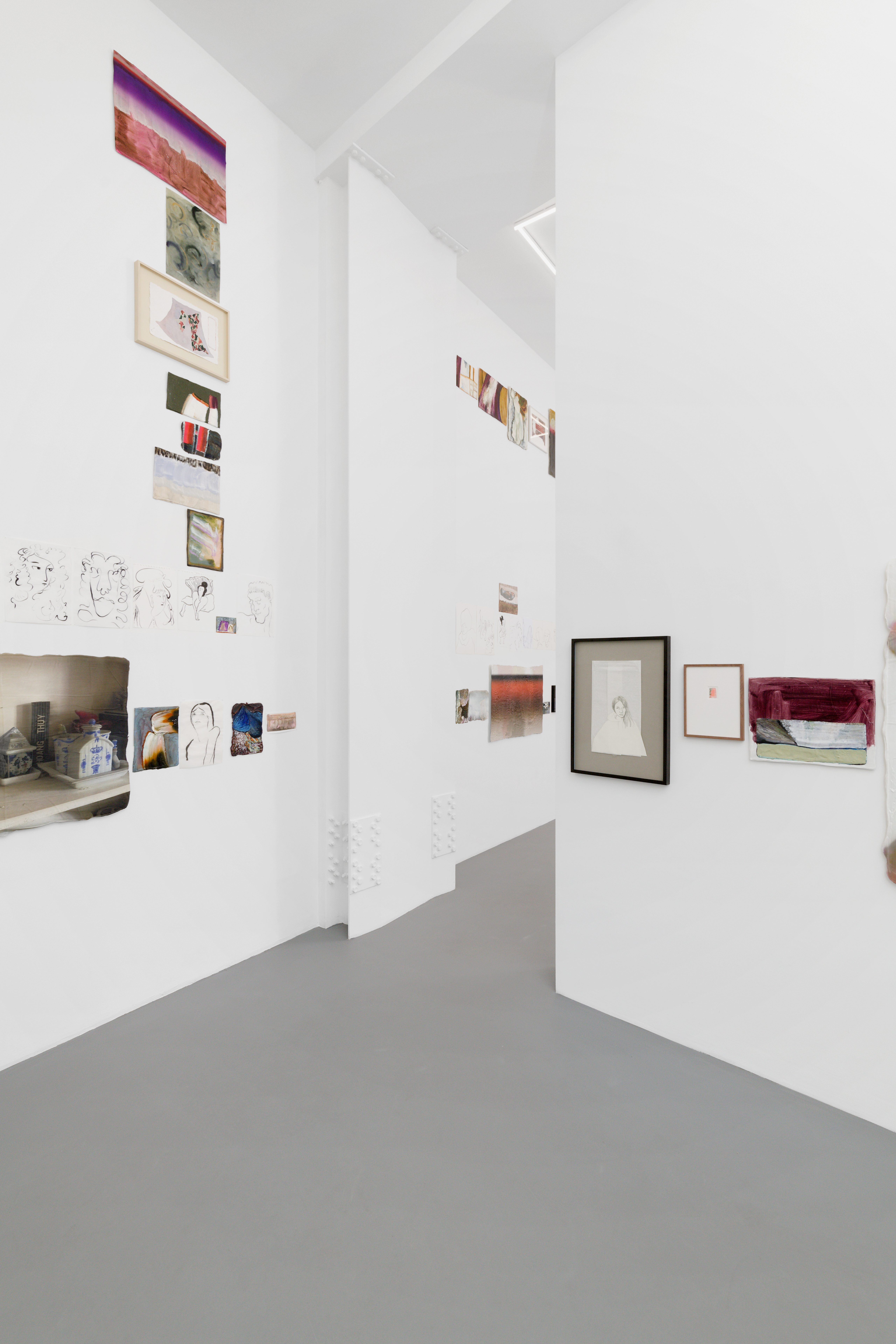
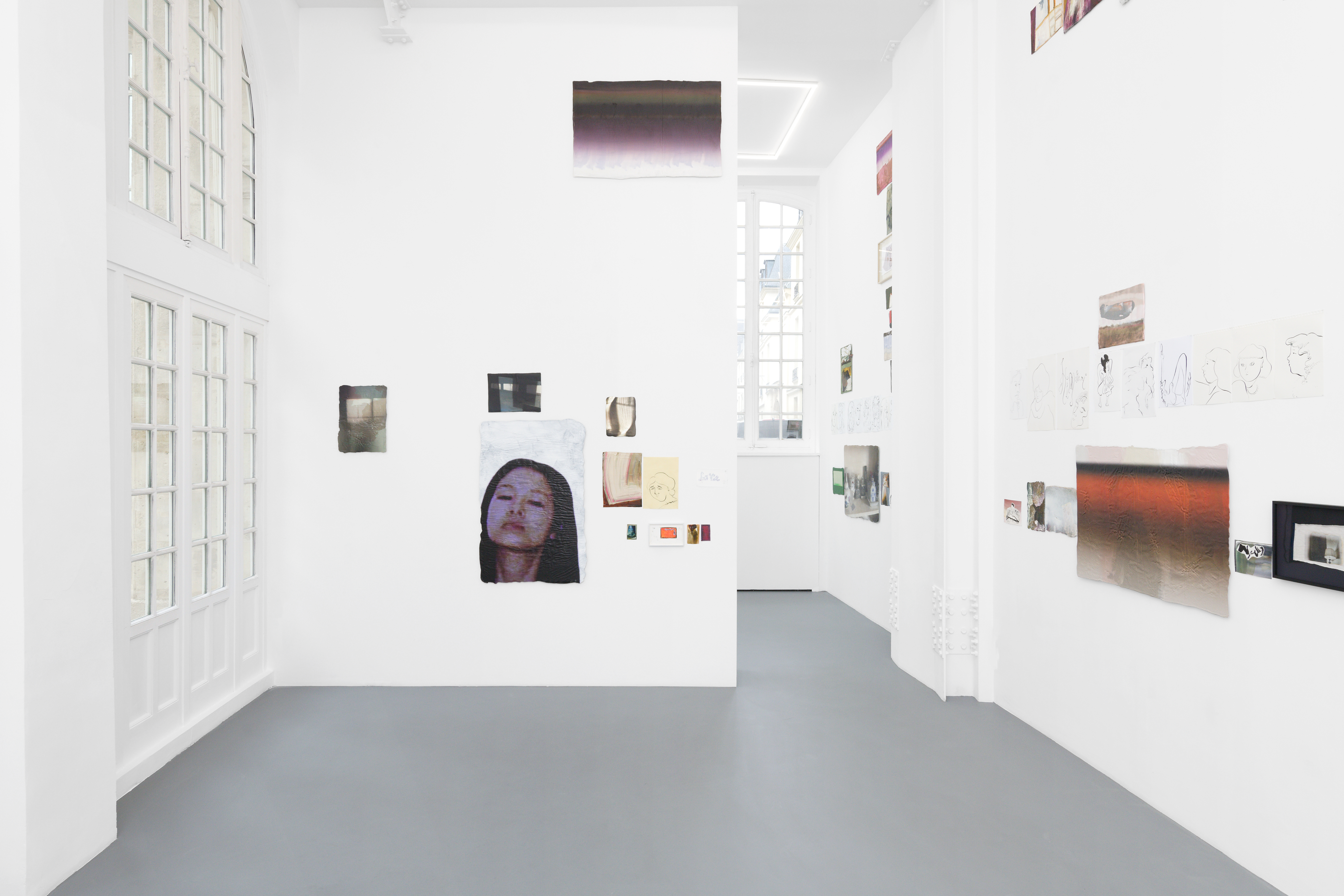
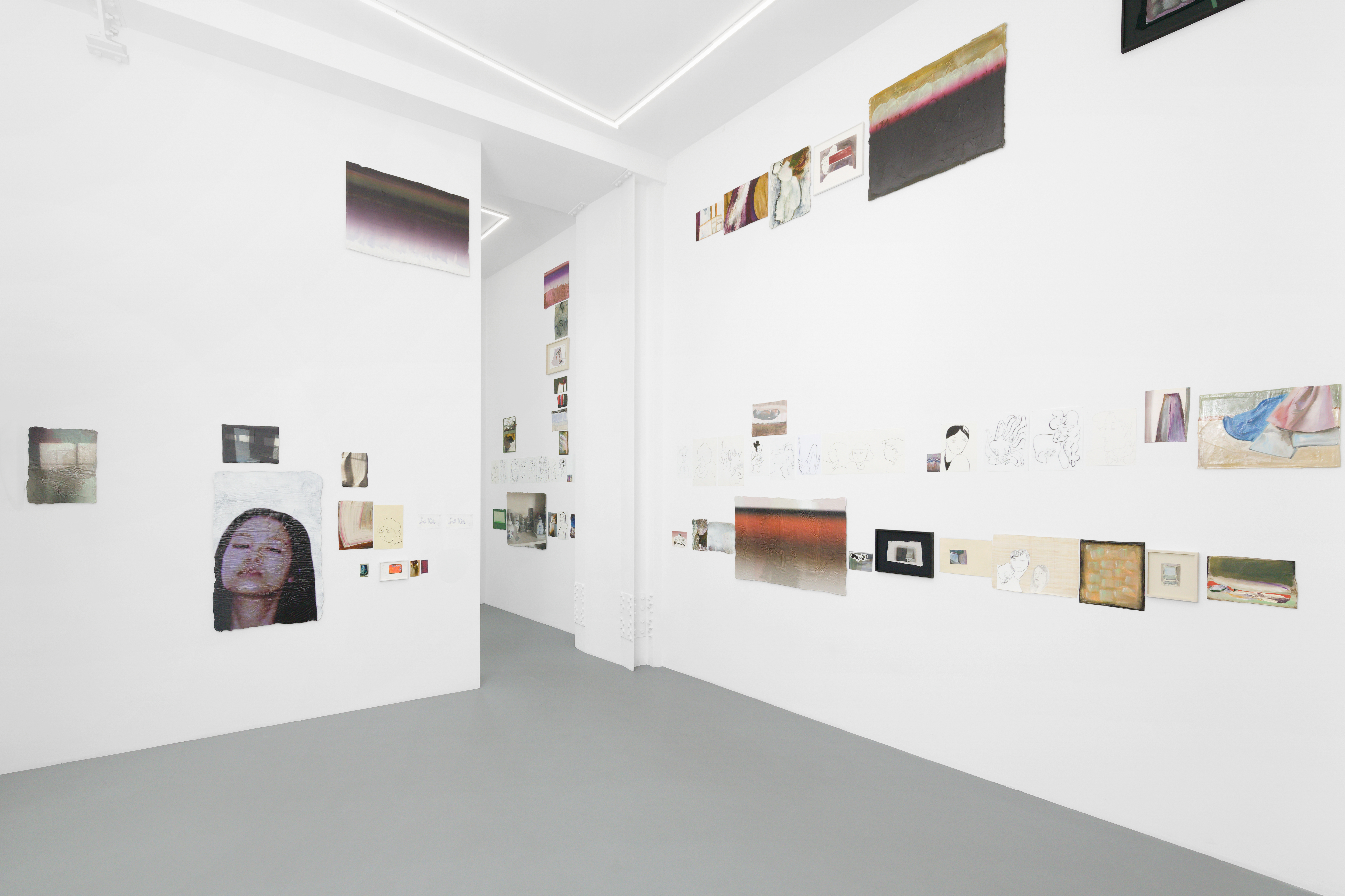
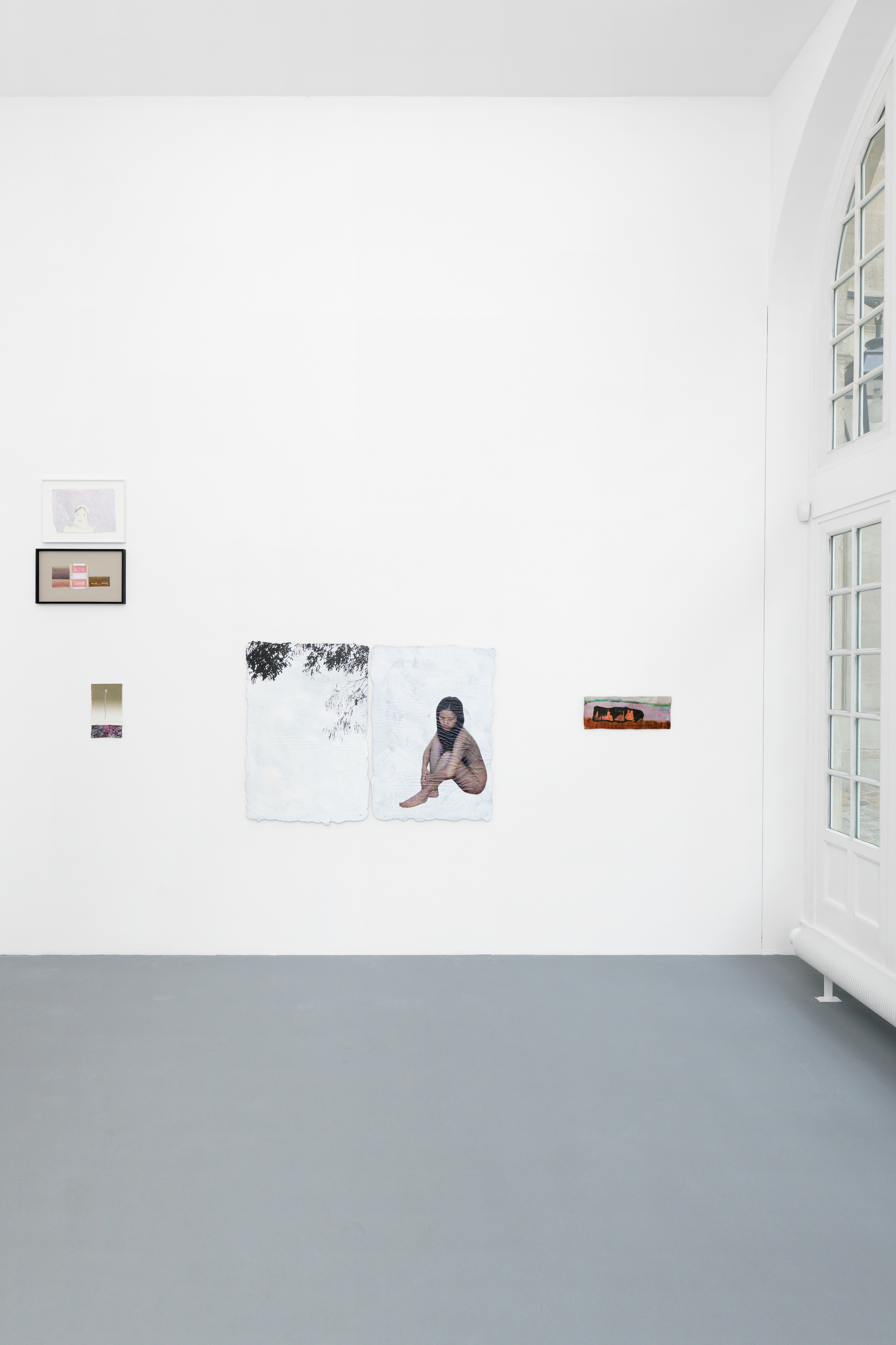

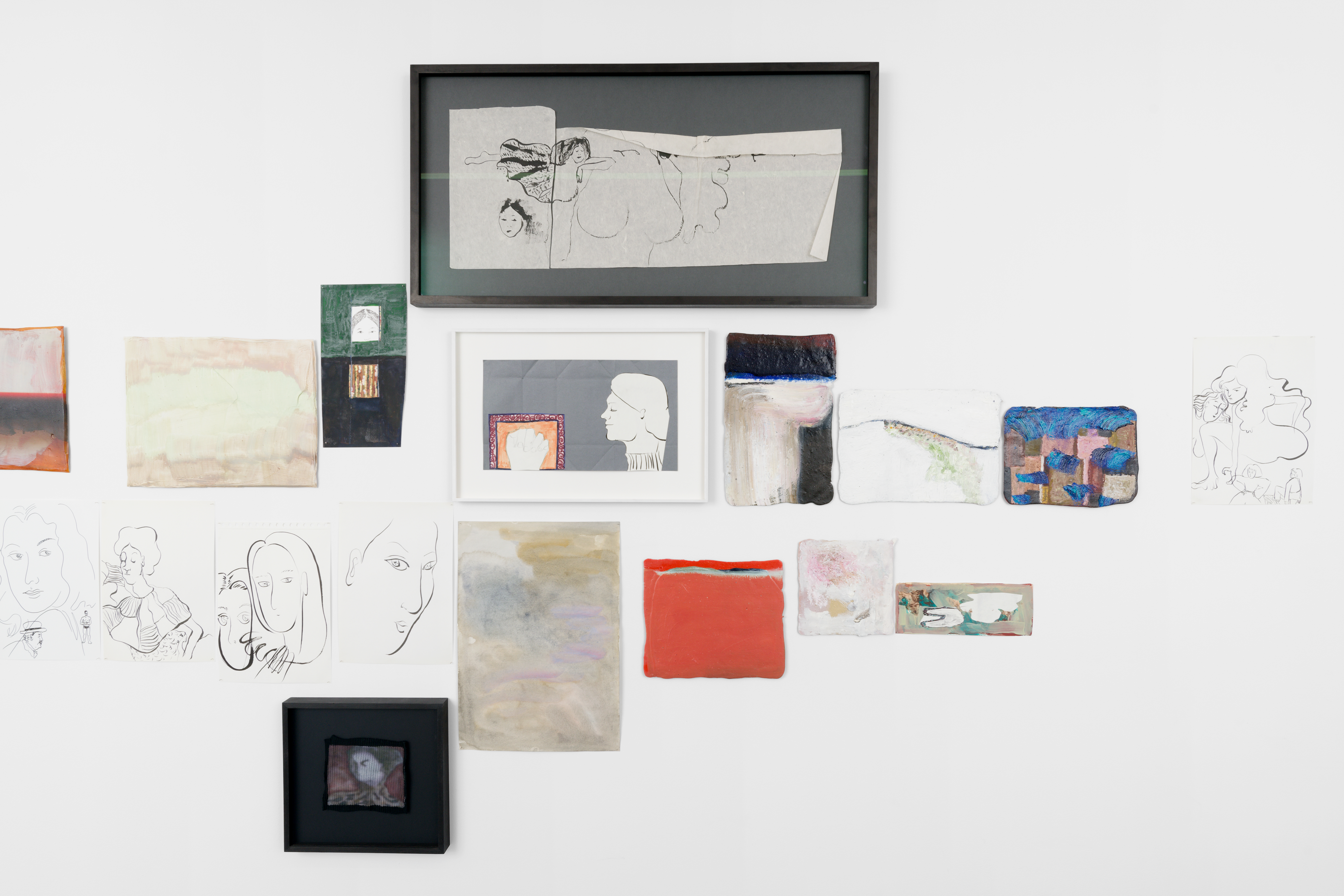
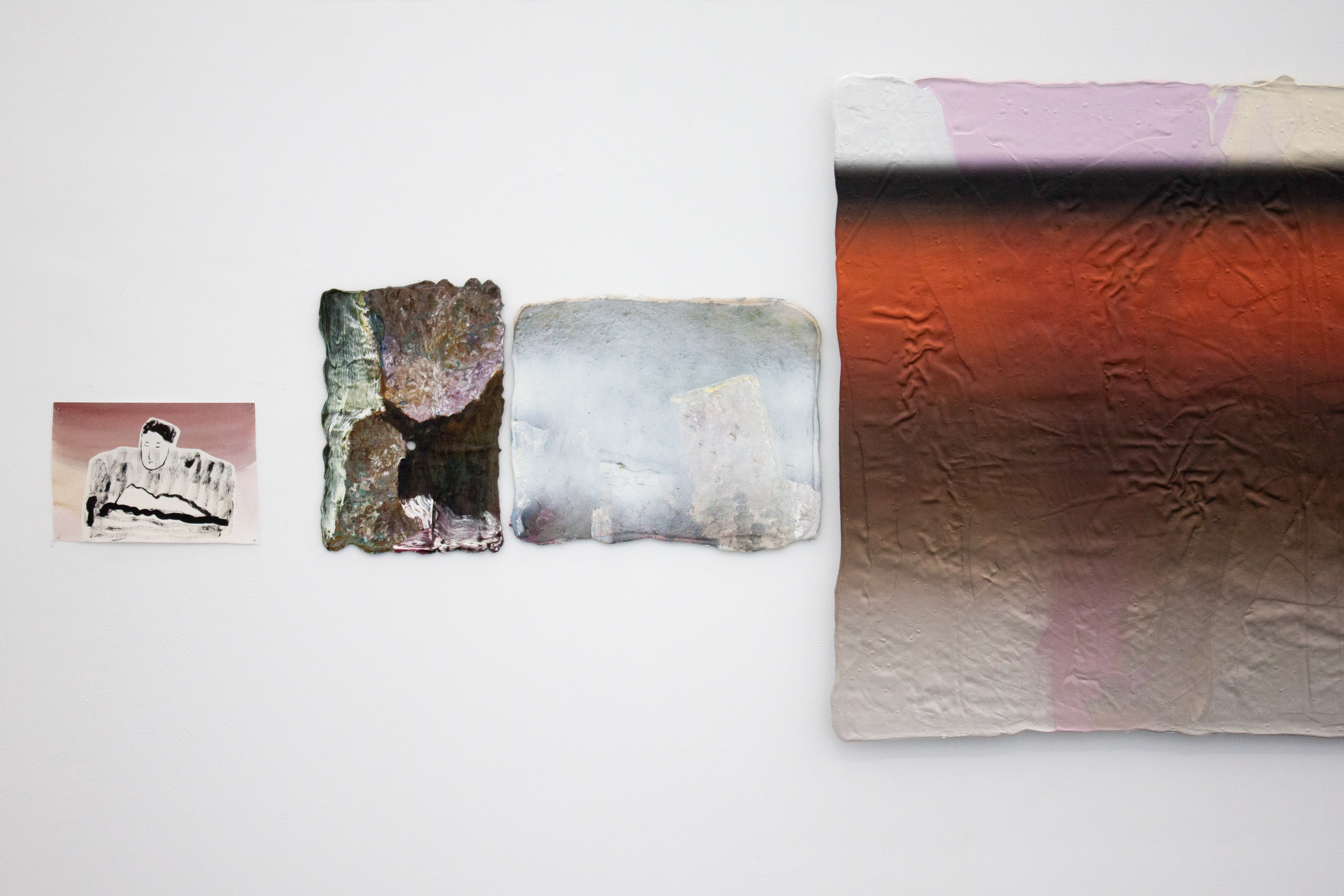
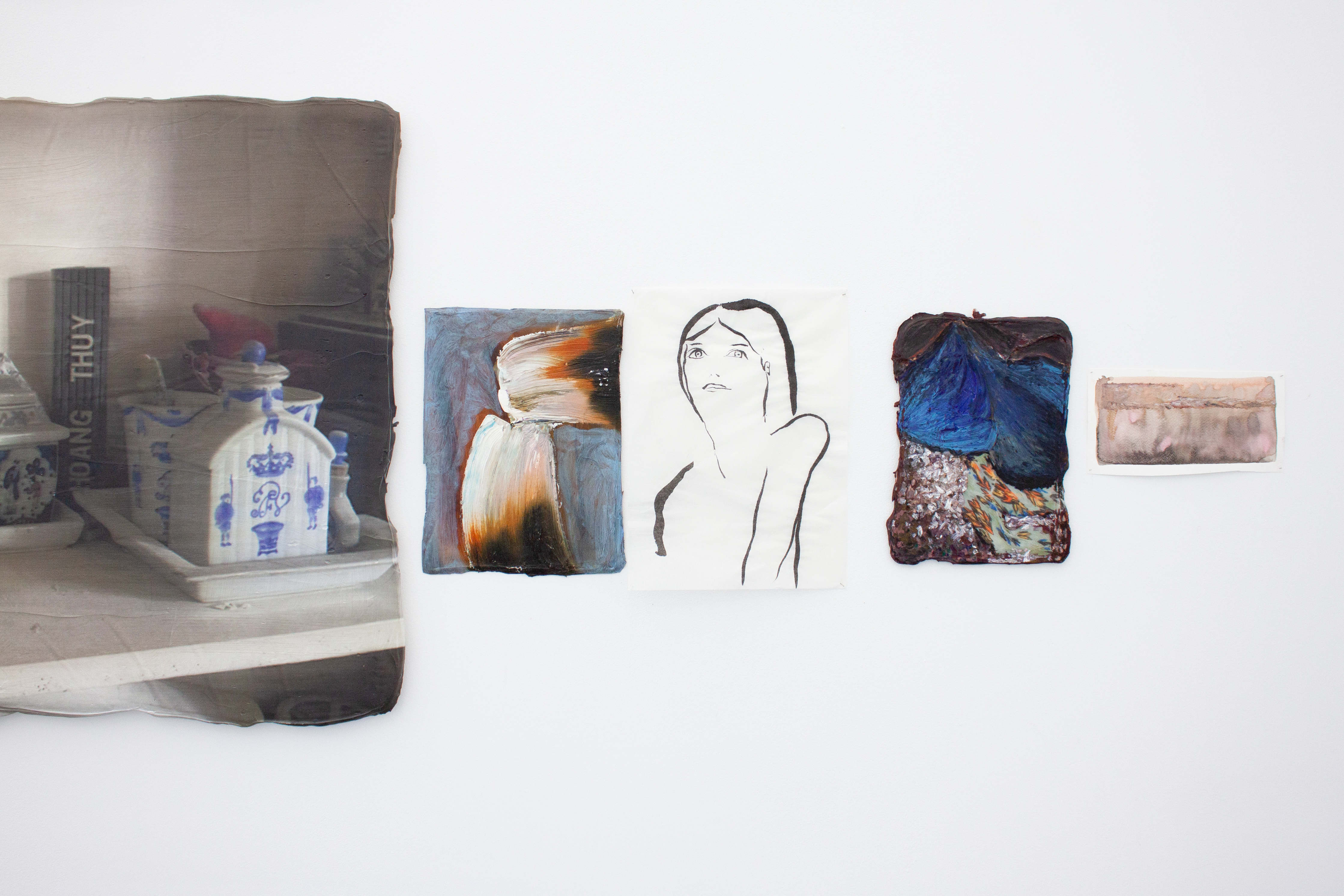
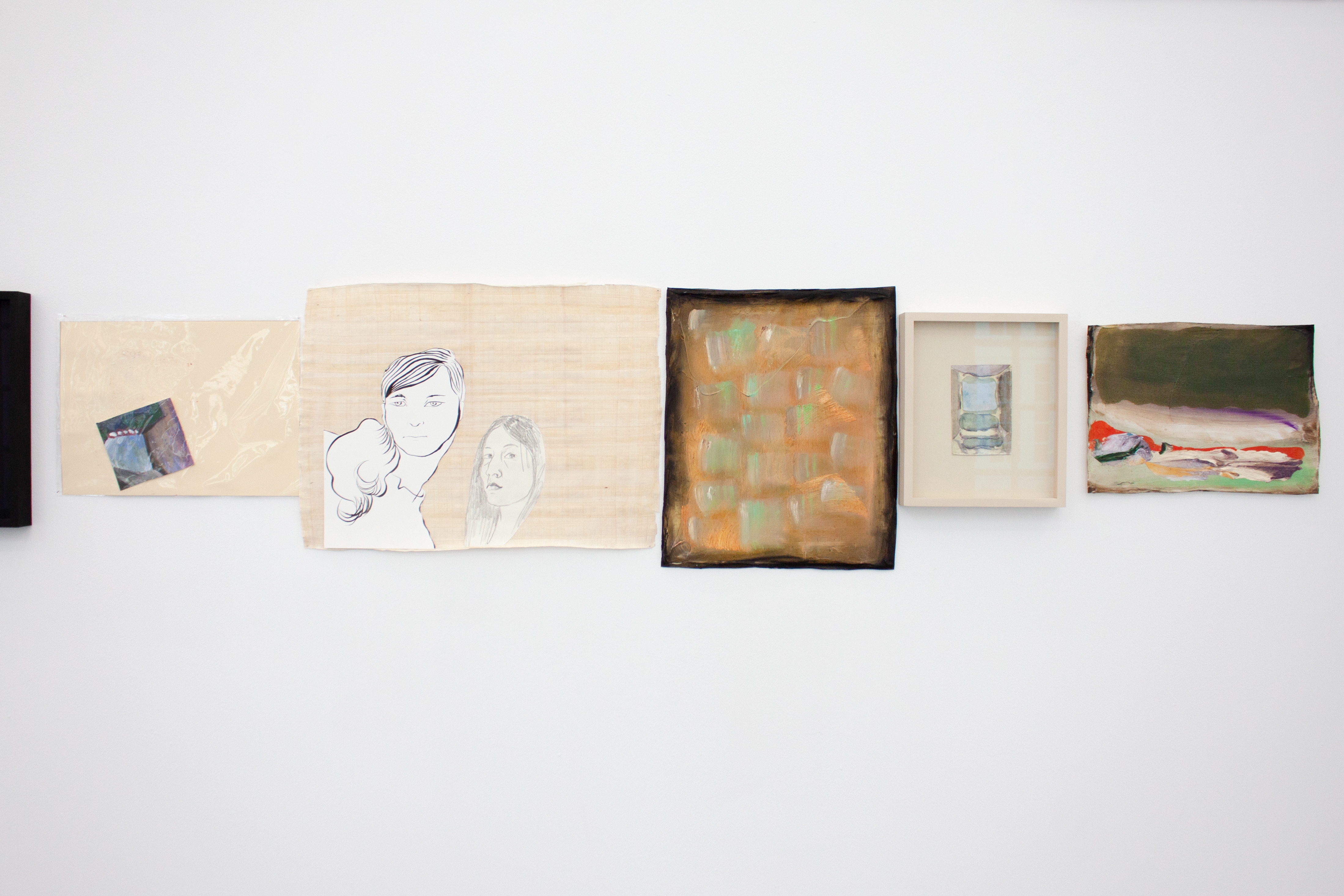
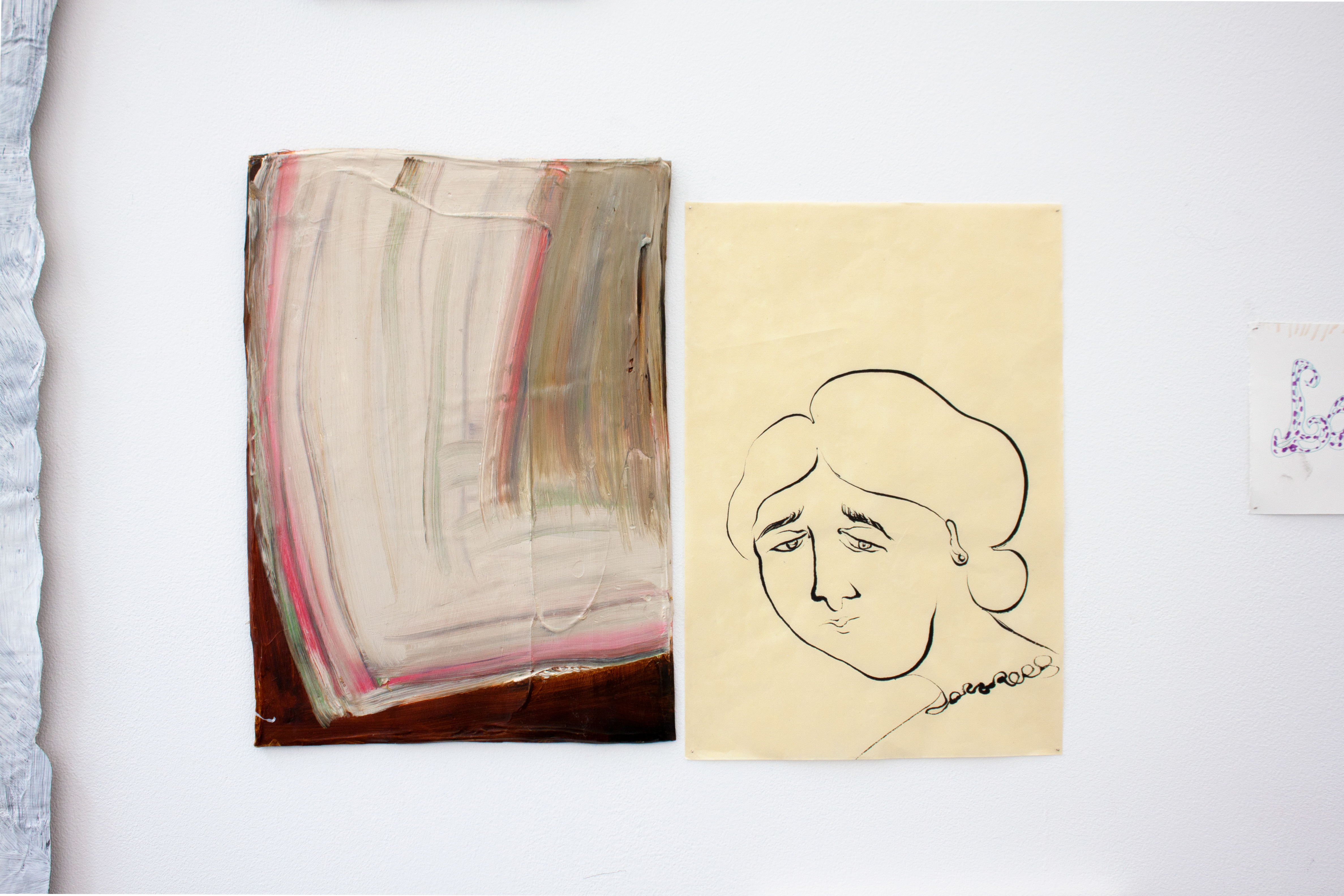
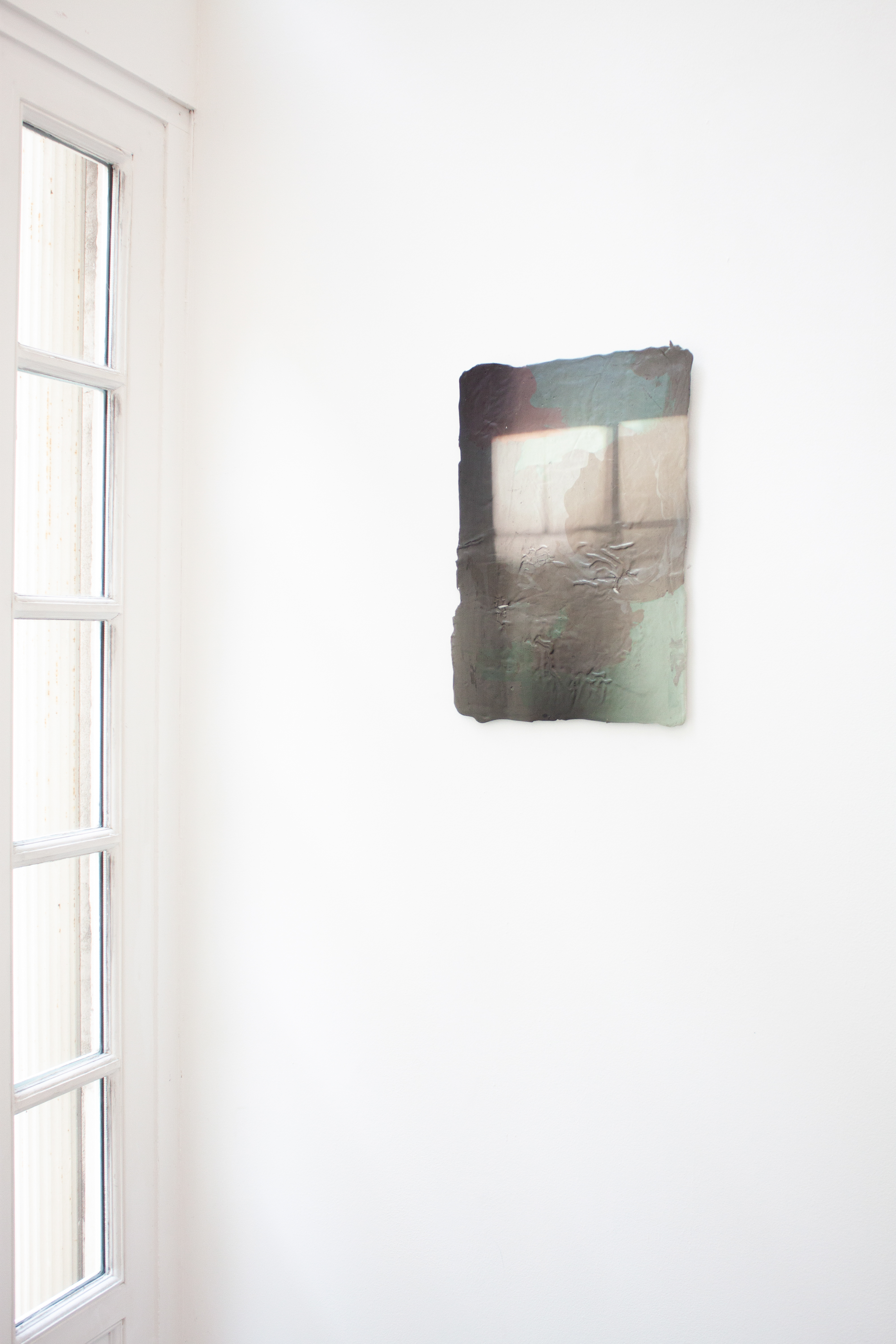
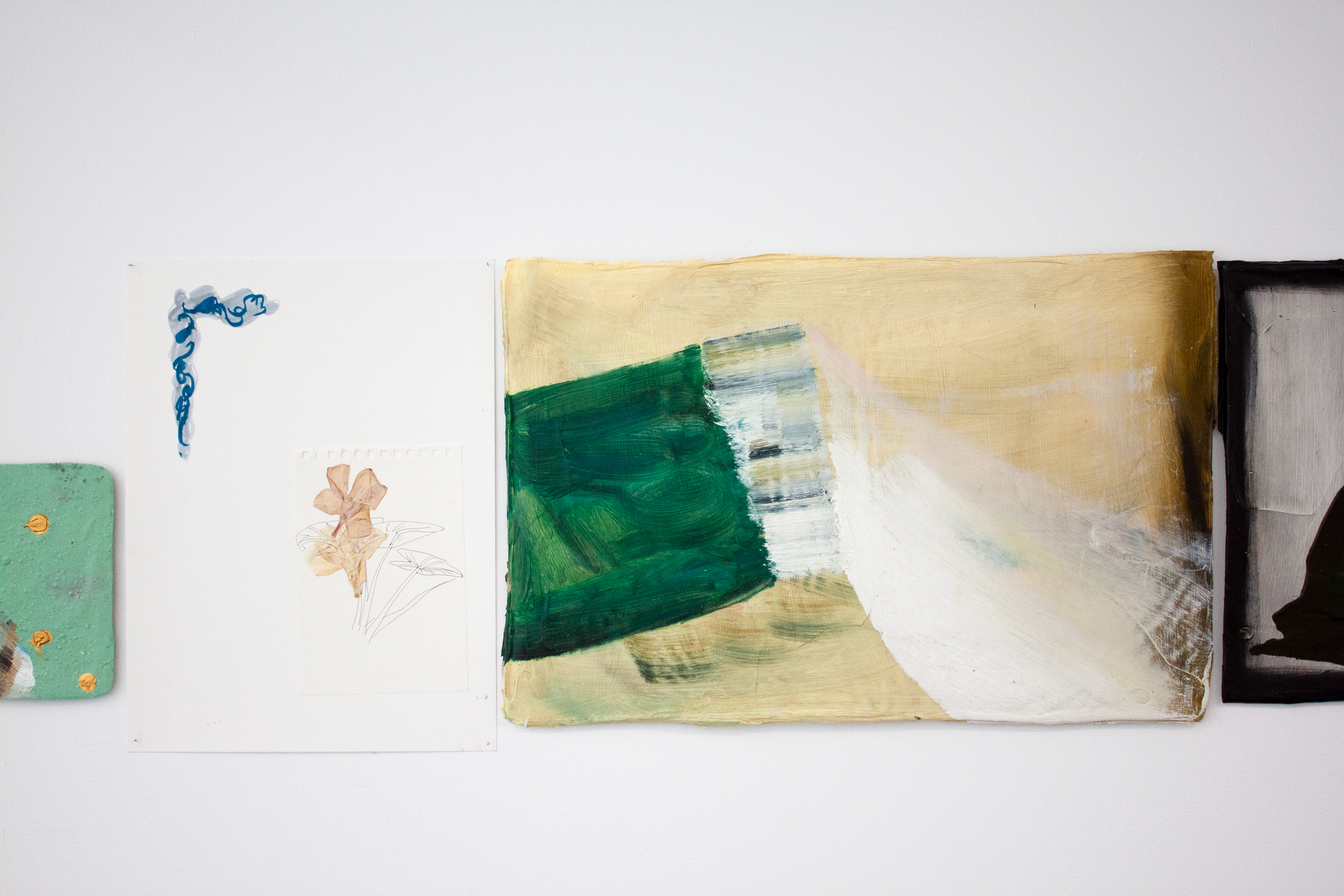
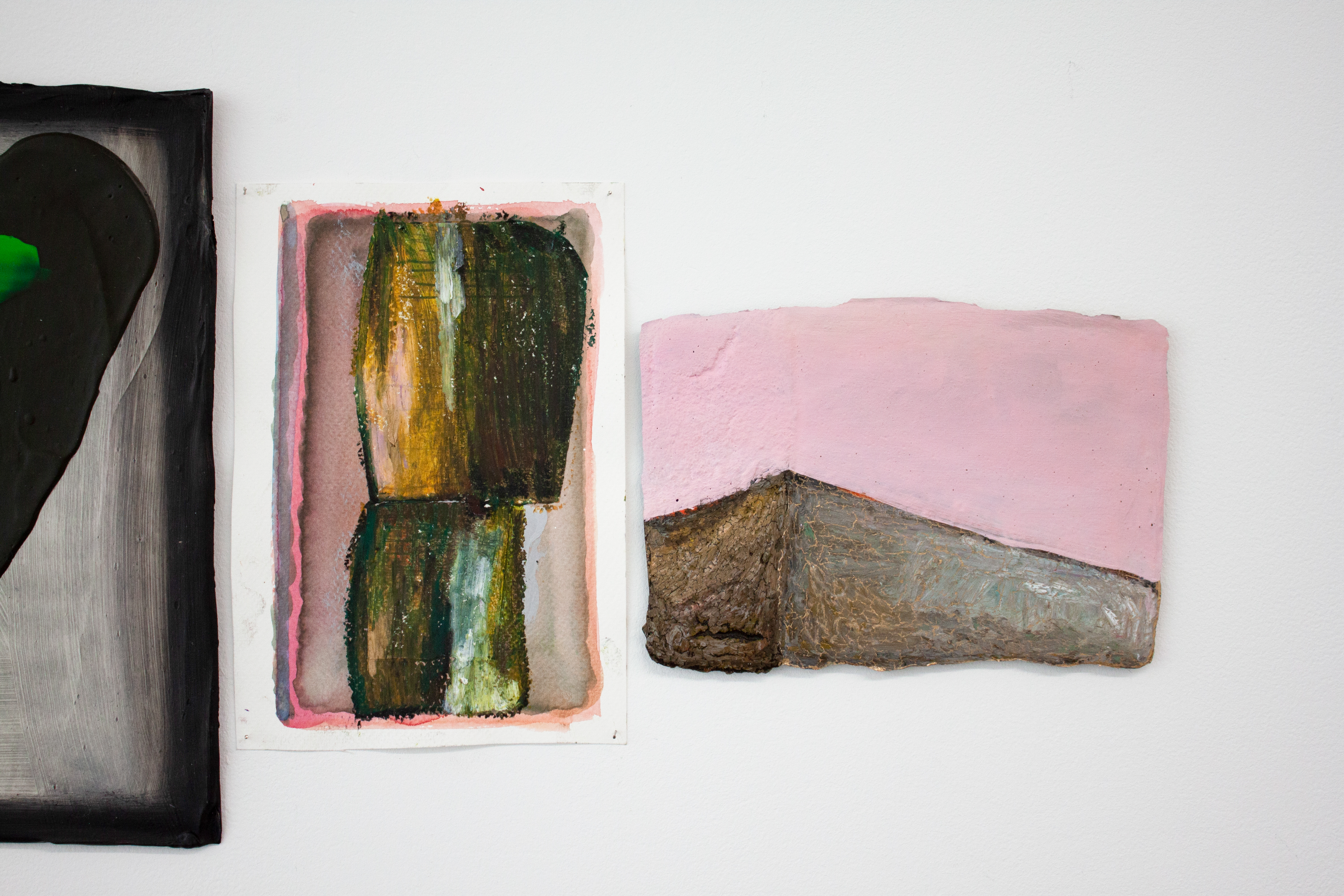

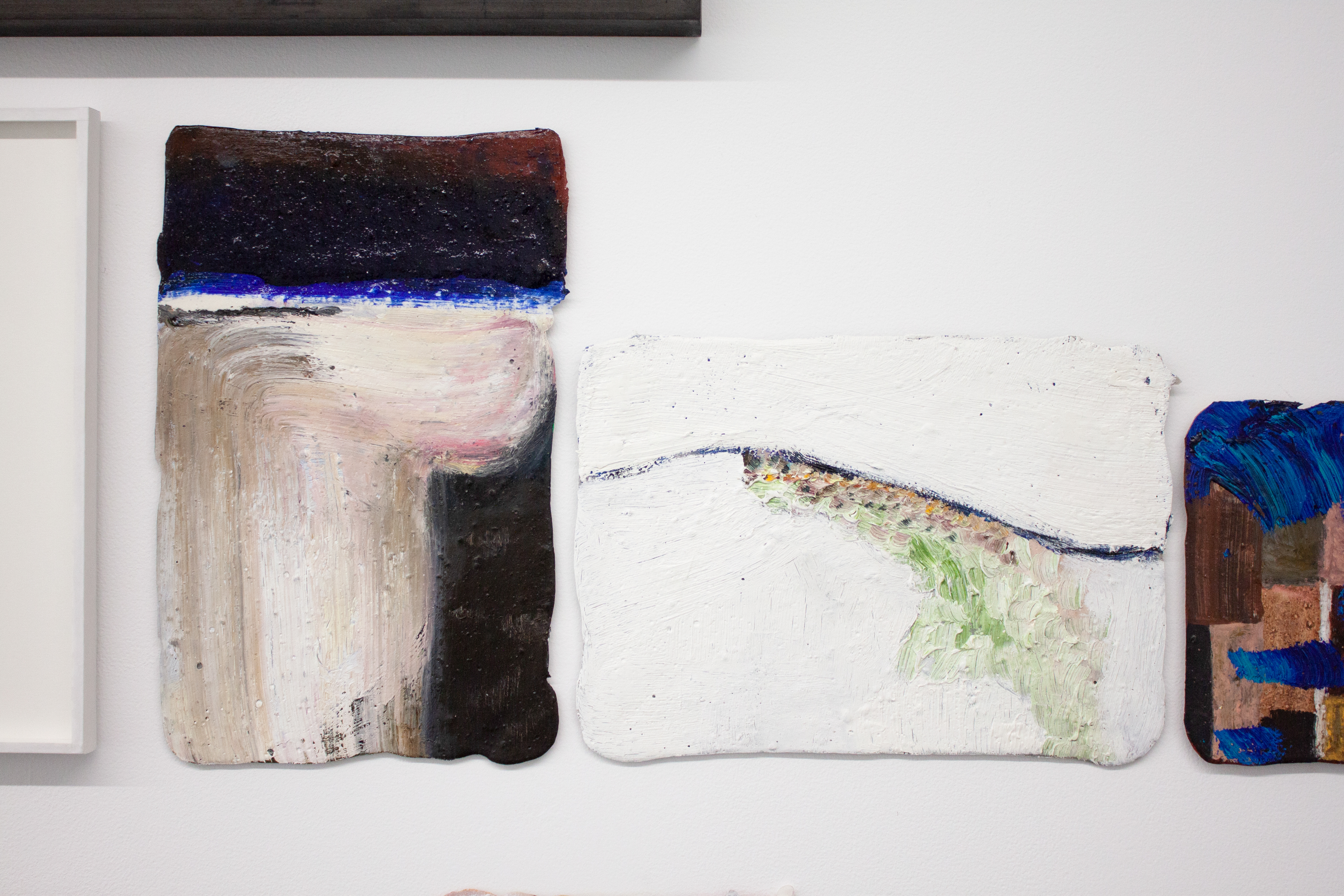
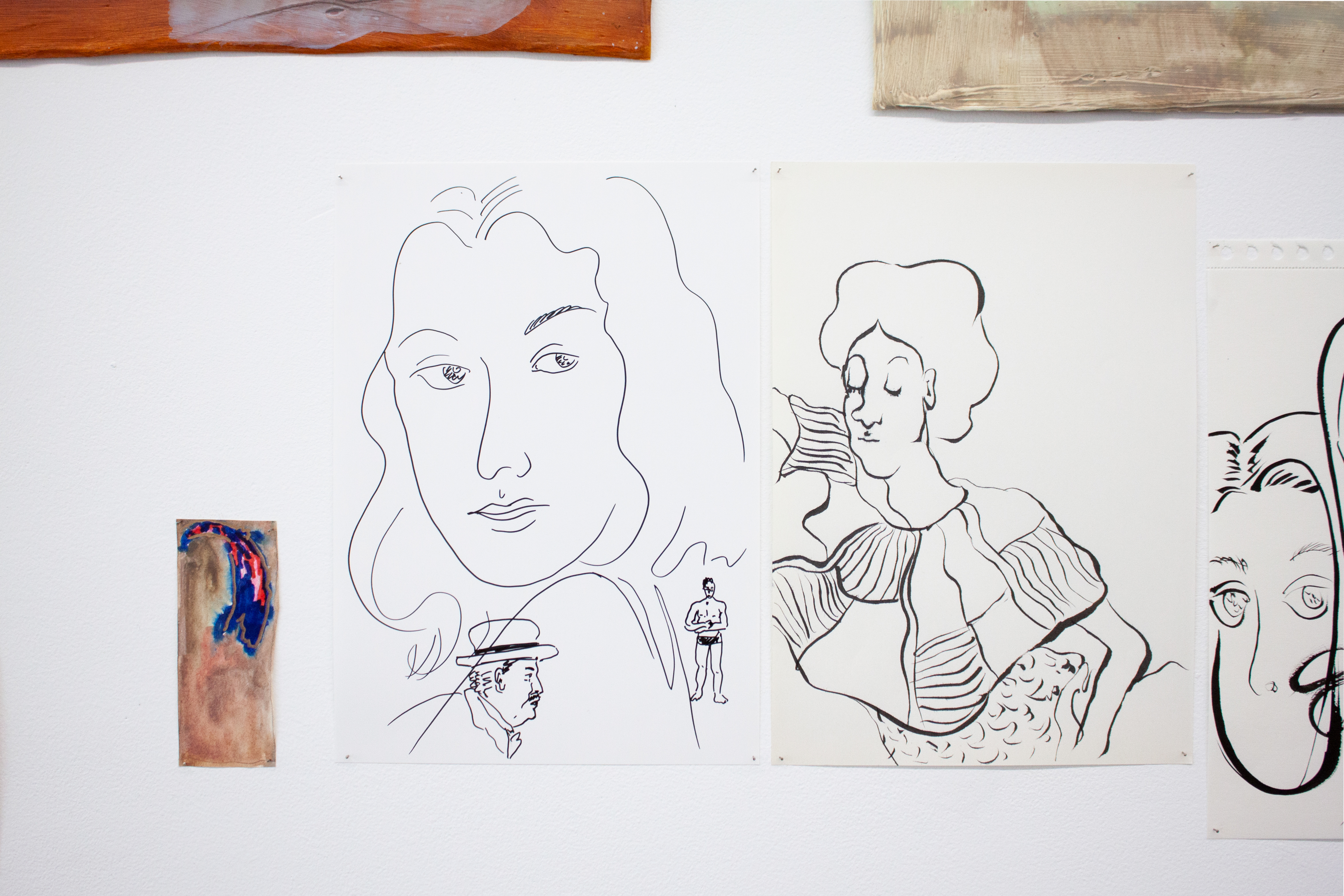
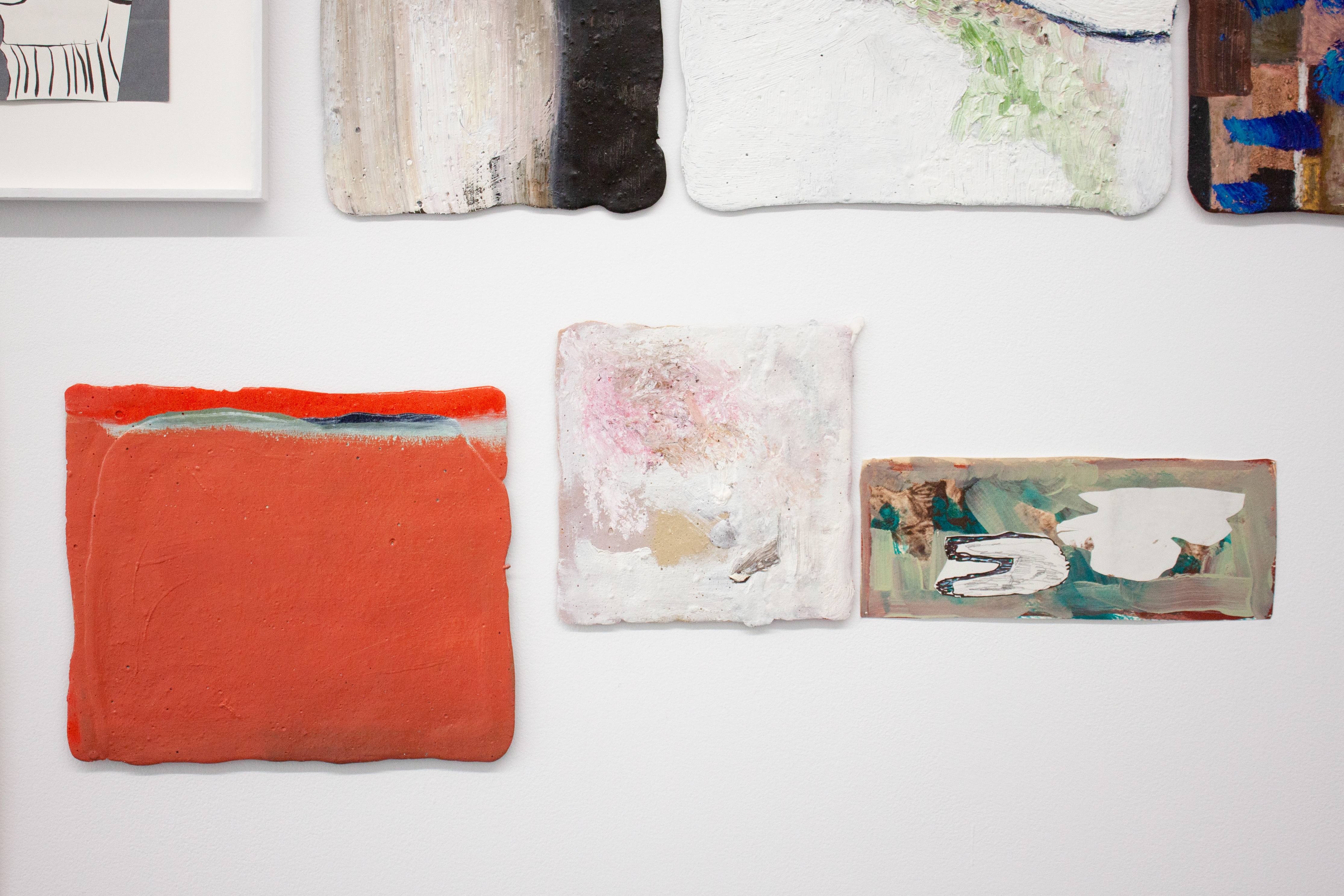
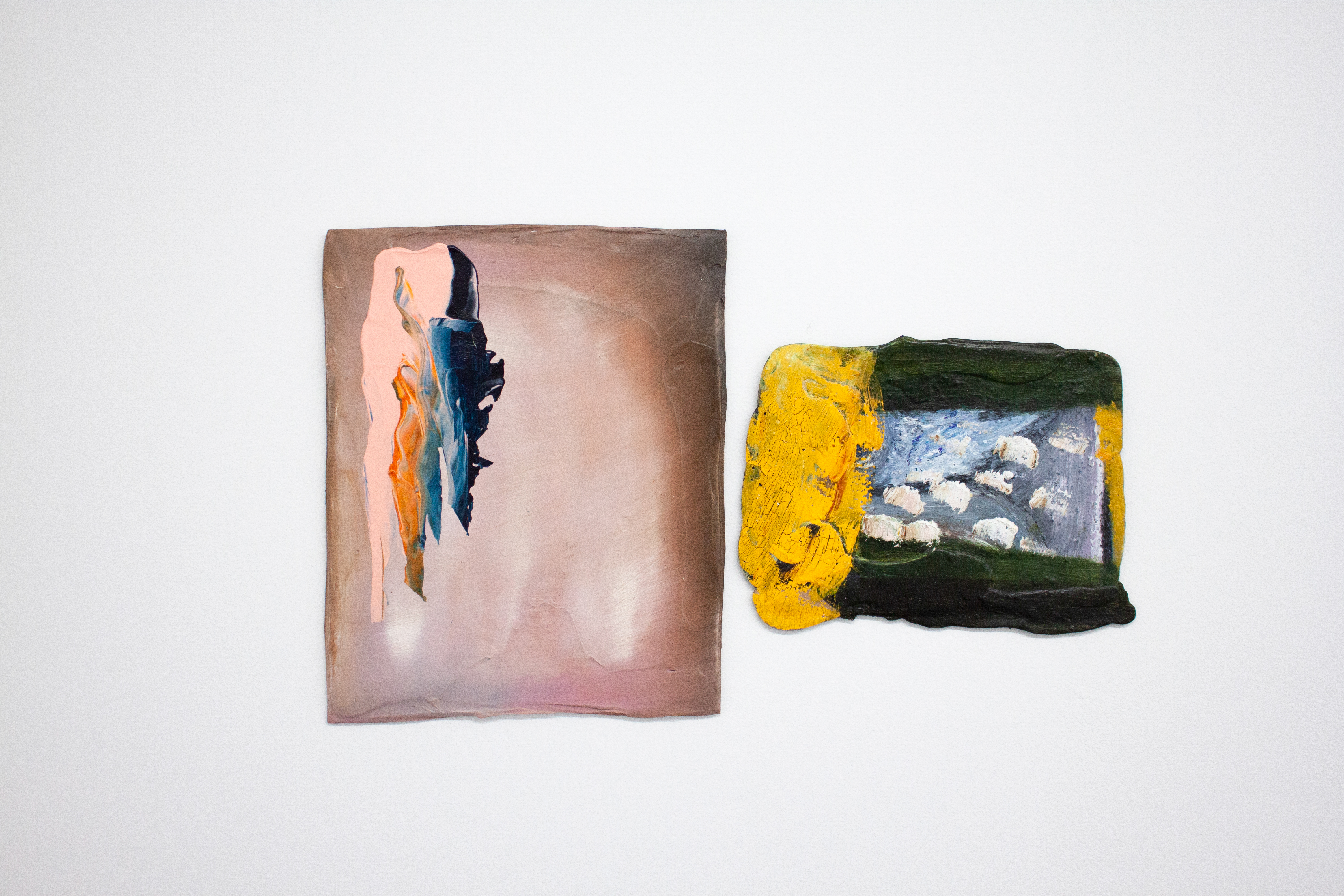
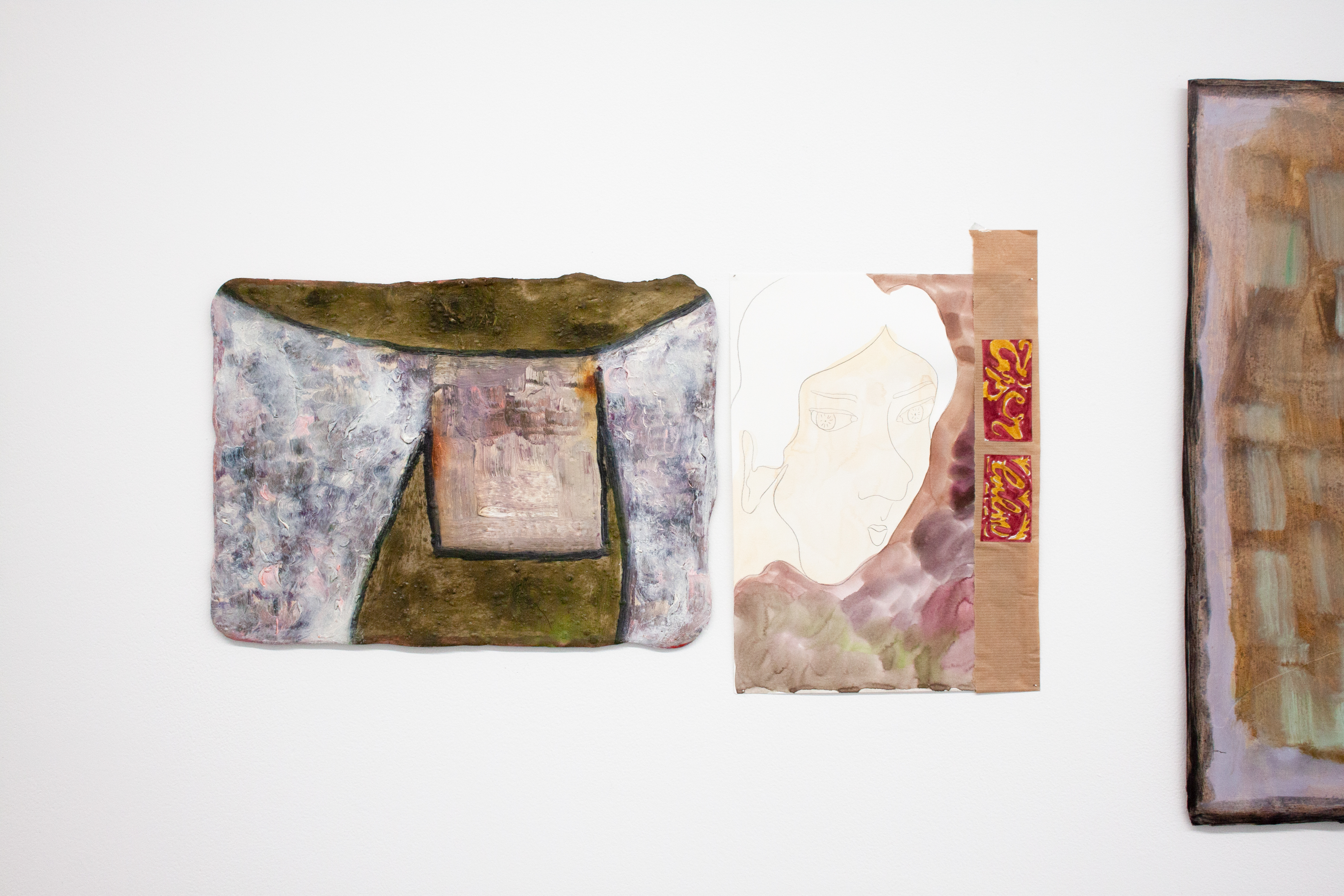
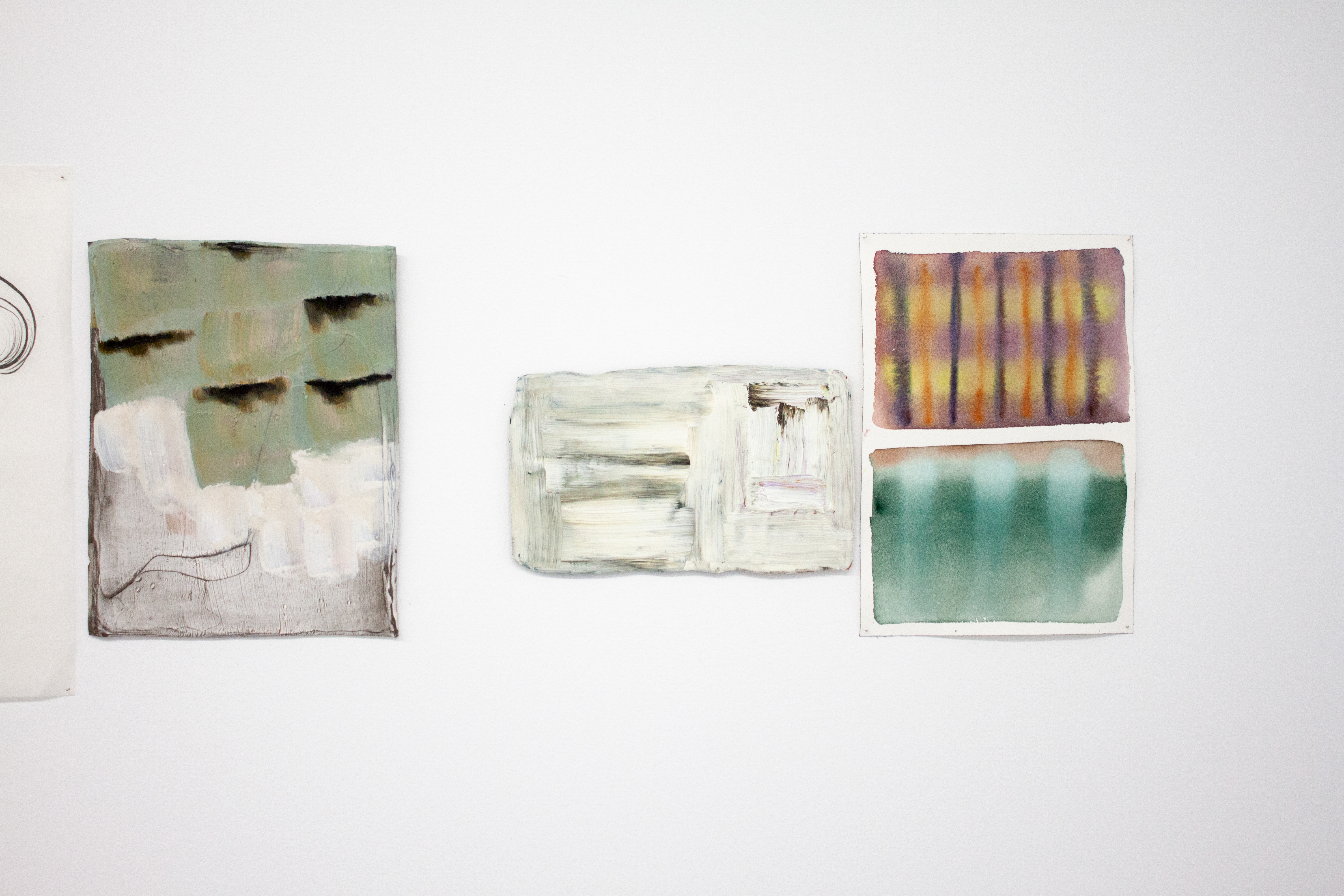
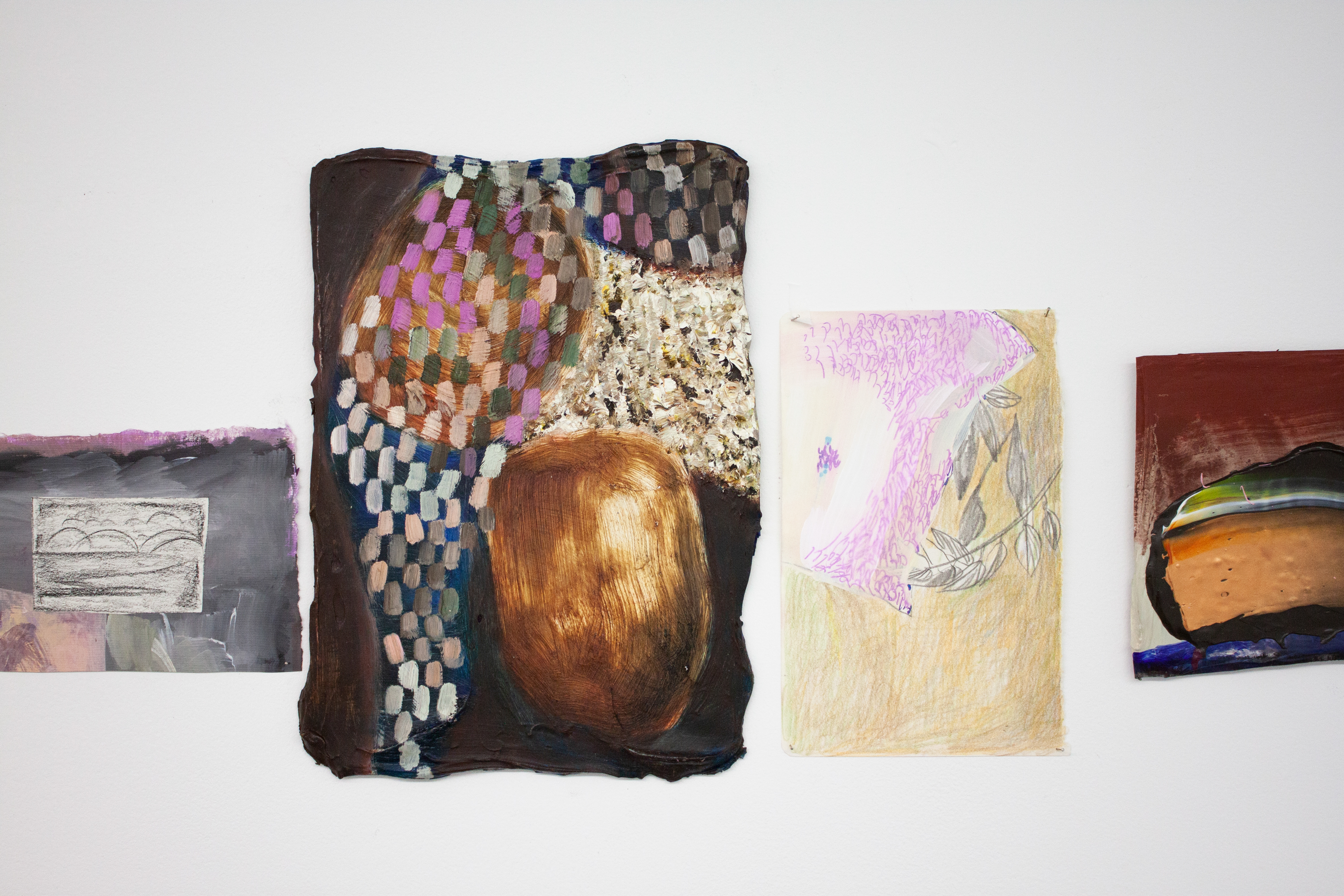
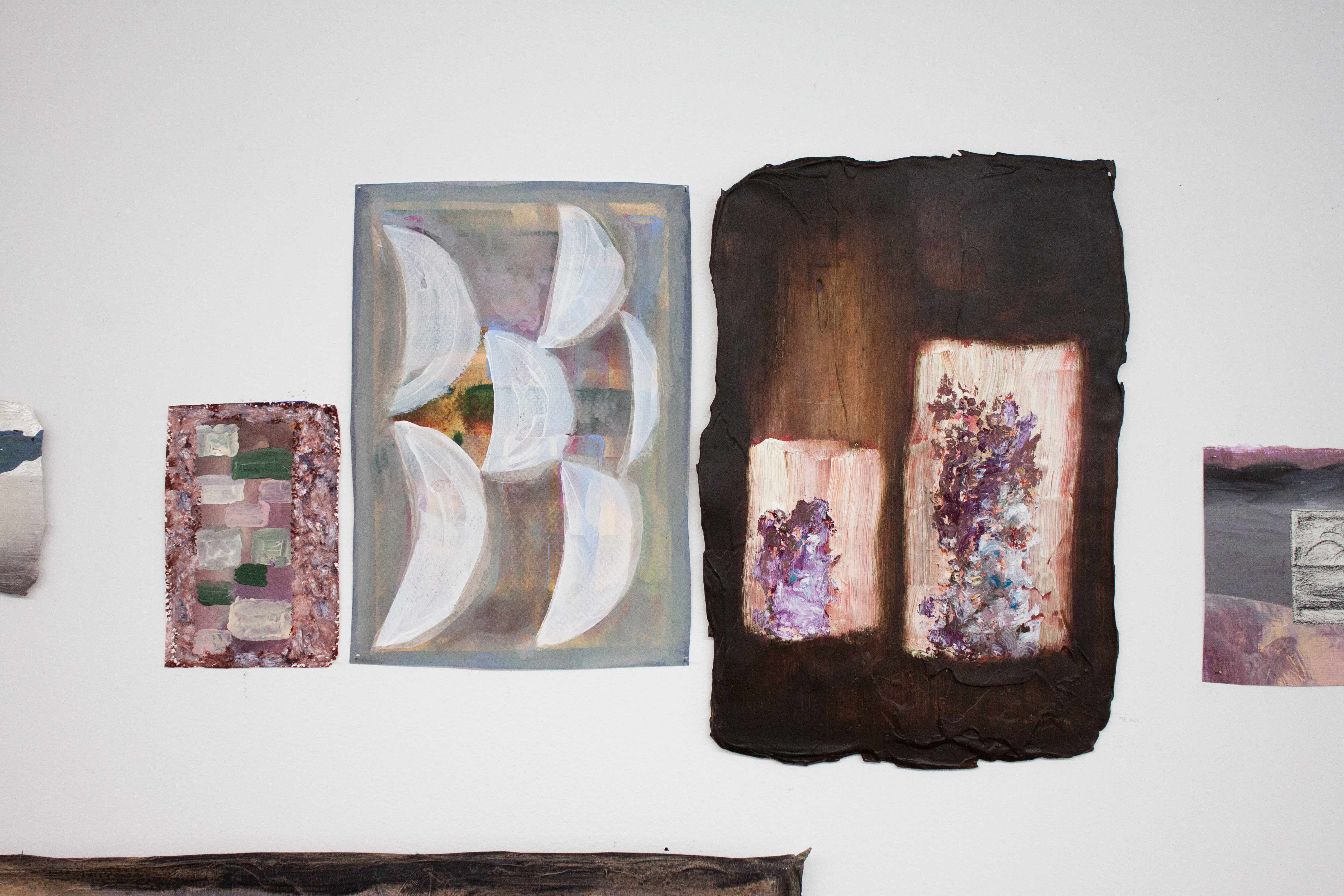
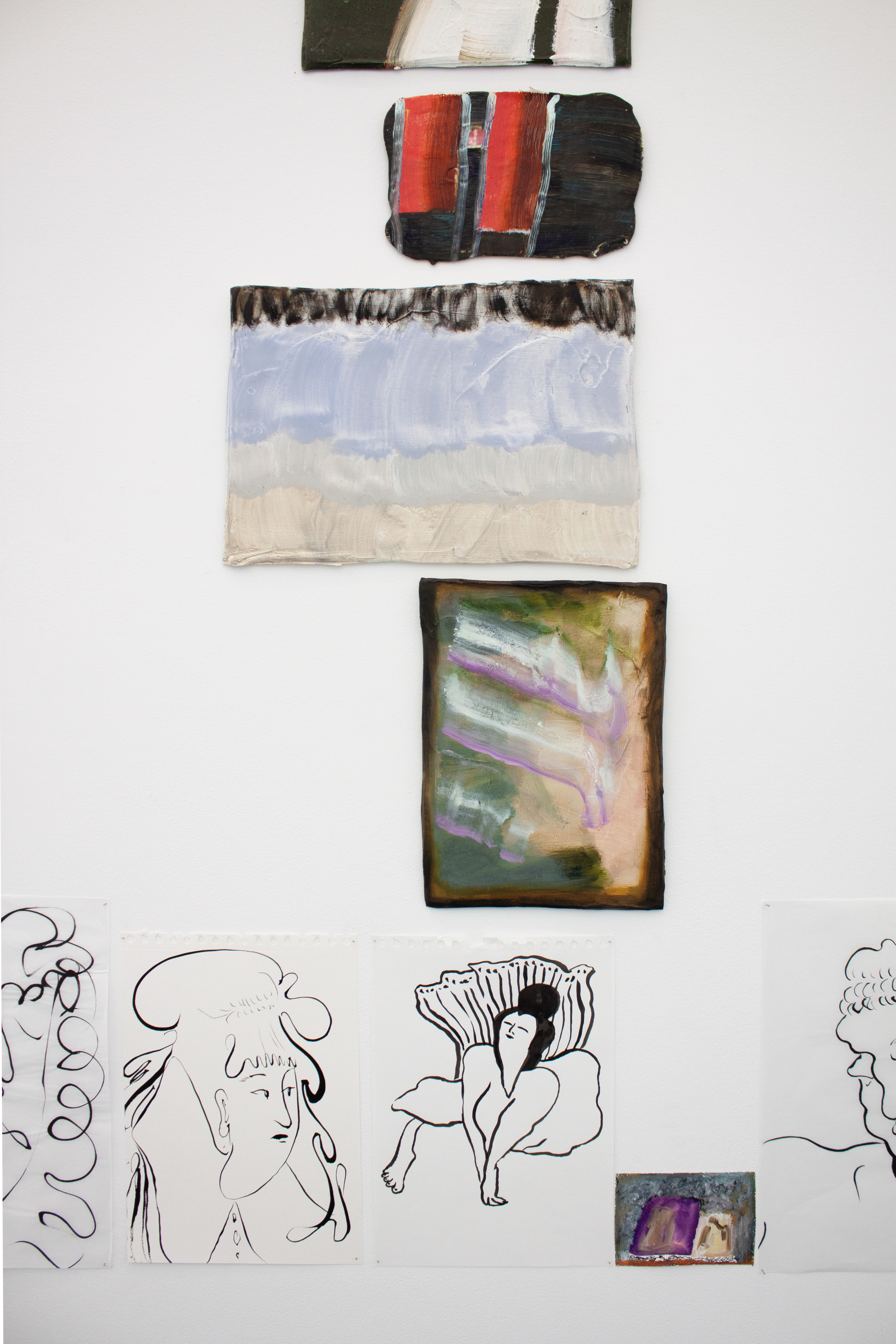
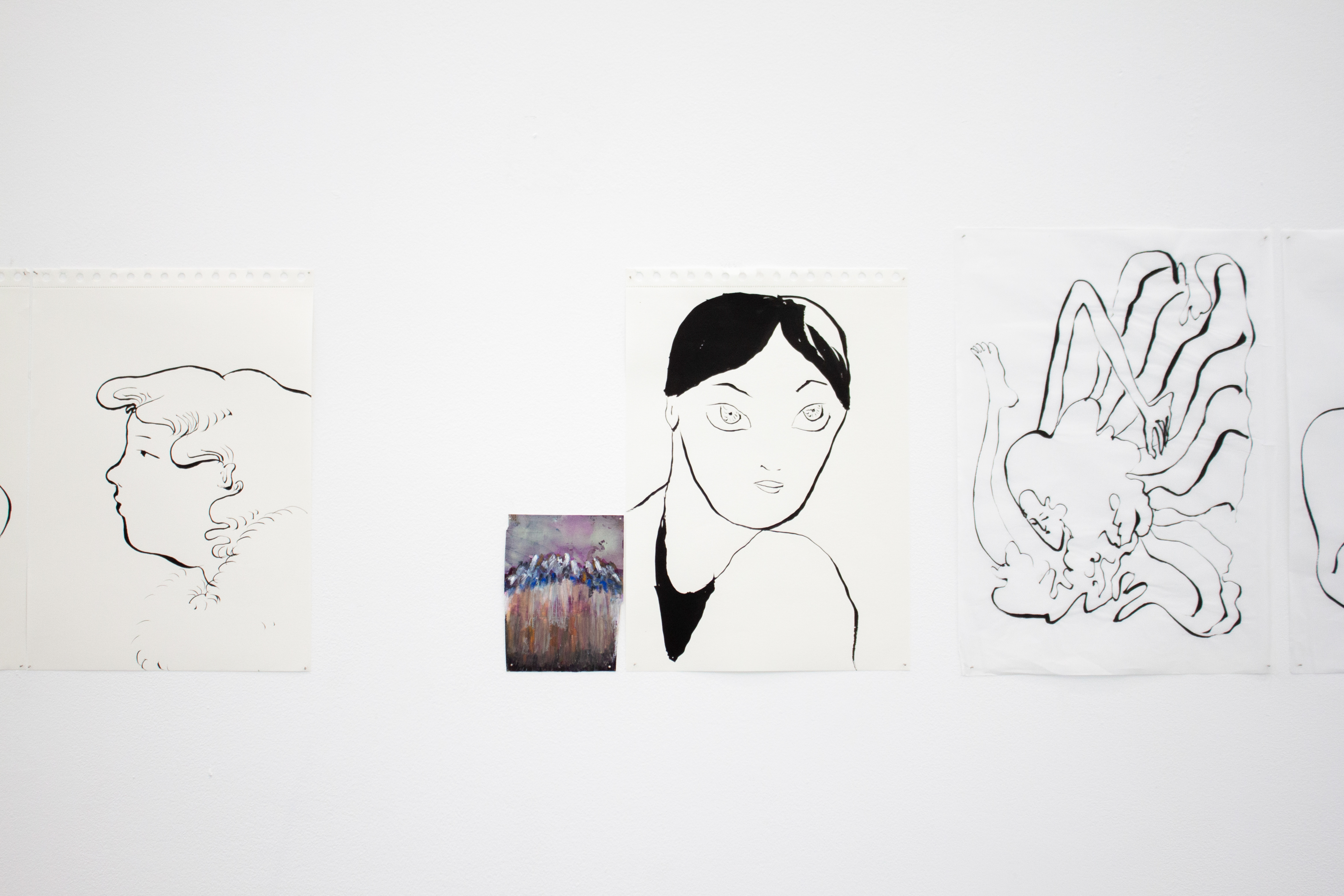
Notes, 2024
Galerie Mitterrand, Paris, France
My-Lan’s auto-fiction
My-Lan Hoang-Thuy opens her second solo show at Galerie Mitterrand from May 23rd to July 27th, 2024. Aged 34, the artist has transformed the gallery space, rendering it feverish: a large number of paintings and drawings cover almost the entirety of the gallery’s walls, in an exhilarating, oozing yet chiseled juxtaposition. Here, a large-format digital print on acrylic is laid bare on the wall. There, a series of head drawings on loose sketchbook pages run rigorously along an imagined ridgeline. Further ahead, is a framed collage, breaking with the compulsive hanging dynamics of the rest of the exhibition.
The vast majority of the works date from 2023, a year marked by My-Lan Hoang-Thuy’s residency in Montmartre and two major exhibitions, where we discovered the artist "and the boys" as well as her hybrid use of photographyi. And it is undoubtedly in response or reaction to these three events that the genesis of such a proposal, boldly welcomed by the gallery, is worth seeing.
My-Lan Hoang-Thuy and the boys. Or rather: My-Lan and the Boys Band. This uninhibited title marks the young artist's entry into the pantheon of the greatest names in modern and contemporary art. In this exhibition at Christies from September 8 to 21, 2023, My-Lan's works were presented in subtle dialogue with those of her "fathers/peers": Lee Ufan, Victor Hugo, Pierre Bonnard, Kai Althoff and the studio of Wiliam Morris. In a secluded, inconspicuous room, the artist had arranged reproductions of her teenage drawings, the tenor of which can only be touching. Shy, cheerful drawings of the Spice Girls, framed for the occasion, bore the status of confession. In this very spot, in September 2023, My-Lan was already revealing another part of herself. She was telling her story through her fantasized entourage (the Boys Band) and through an adolescent gesture characterized by a rereading of the emotions and myths specific to that tender, ungrateful age.
Her new exhibition at the Galerie Mitterrand is a delightful extension of this. The Spice Girls, once plunged into the darkness of a padded room, have now emerged from their sheet of paper. They are reunited under every facet of My-Lan Hoang-Thuy's work, who takes advantage of her own impertinence to present a display of immense vi-ta-li-ty. Let's face it, age is a matter of mood, and the gallery resembles the walls of a teenager's bedroom. But here, My-Lan doesn't play the young girl. On the contrary, she exhibits her great erudition, which lingers on the art of mural composition, reviving the feverish spirit of fan-art hangings and 19th-century reproduction collectorsii. Better still, the erudition turns to the artist, who no longer encumbers herself with tutelary figures. She is the star. Framed tightly around her upturned face, she proudly gazes out at us in one of her inkjet-on-acrylic self-portraits. In this work, My-Lan leaves aside the representation of her own body to focus on her face and the corporeality of her painting, which makes a case for the image "tattooing" the material. The artist fully inhabits her painting, just as she inhabits and modulates her light, starting with that of her Montmartre studio, which it flooded in 2023.
Two "studio" paintings are displayed above My-Lan’s en gloire portrait - Autoportrait (1). Respectively Montmartre 6 and Montmatre 3, represent pieces of glimmer, emanating from a door or a window, that the artist photographed from her former “green encircled” studio. Did her time at Art Explora's studio bring her painting of photography (the medium of light) more in line with that of painting, to the point where the latter absorbed the image? It would seem so. The new paintings are bursting with light emanating from the pictorial material: northern light, metallic light, ectoplasmic light, and iridescent light. Unlike Montmartre 6 and Montmatre 3, Steppu and Trousseau Crème transfigure the luminous vibration that is no longer a matter of representation. In this, they share an unintentional affinity with the shimmering canvases of Anna Eva Bergman, particularly her rock walls, executed on her return from a trip to the Norwegian wilderness in the late 60's.
While this reference is not intended by the young artist, it does provide an important notion of painting as a vibratory space and a medium for the unspeakable. Indeed, this is a particularity shared by Lee Ufan with regard to his own work: to experience painting is also to feel its space-filling vibration and recognize its resonance.
Solo Rose, the smallest work in the exhibition, acts as a guardian of this vibration: traces of oil pastel sprinkle a patch of watercolor on adhesive paper. The surface shimmers and opens beyond the visible, beyond the speakable, and even beyond the transitory. My-Lan Hoang-Thuy, like Lee Ufan, would place herself on the side of those things destined to be erased.
My-Lan recovers and transforms what fades into oblivion. But can you recycle a memory the way you regenerate a sock? Gratin Gratiné (2022) bears this strange promise. A piece of fabric from one of her companion's old socks is used as a support for a digital print in which we think we recognize the strange silhouette of a woman. The fabric is no mere coincidence or material anecdote. It is the very proof that My Lan is striving to awaken the neglected by giving it an ornament. Other works in the exhibition attest to her wise art of reuse: Qui Aime L'Hiver (2019) and 24 candidats (2022). The caption for the former mentions the use of cardboard packaging and toilet paper rolls. The second doesn't say much about the everyday materials used (India ink, watercolor and acrylic paint on paper). Yet it is the result of the same technique of collecting and putting on hold. The three components (the drawing, the faded background, and the piece of red) were made at different times in the artist's life, then individually preserved in boxes. After a few months' maturing, the artist uses them, juxtaposing these different visual parcels in a gesture akin to a "self-fiction surge". This term defines not only the conditions of the work's genesis, but also My-Lan's ability to tell her own story through heterogeneous materials. Applied to the scale of the exhibition, this term would even define the whole of her curatorial gesture: a combination of scattered materials in an autobiographical perspective in which My-Lan takes control of her narrative.
During our discussions, My-Lan told me about her problem with a model painting that lacked "guts". This comment related to one of her works (Pull Marvin, 2023), which originally depicted a portrait of her partner, of which all that remains is a piece of sweater in the top right-hand corner. This comment goes beyond the description of a single work, as it applies to all her new work, in which she ceases to "play the model". The artist is indeed known for her stripped-down photographic self-portraits: poses of herself for herself, which she develops alongside her recurring practice as a model. But the practice of nudity is becoming increasingly rare (her exhibition at the Maison Européenne de la Photographie already marked this first step aside). According to the artist, drawing has taken its place as a means of exposing the nakedness.
At the heart of this exhibition, drawing is triumphant, in a nudity that dares not speak its name.
These heads, drawn by the dozens, cohabit with a painting that seems to have resolutely taken the step of using material as theme: it is it who draws the motif, raising levels of depth and light. For this reason, My-Lan acts like her painting. They take parallel paths: they draw a line across the space of representation to fully inhabit the body of the painting that dictates itself. What we see here then, cascading down these walls, is called a novel.
Julia Marchand

























